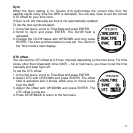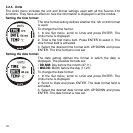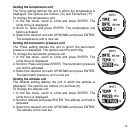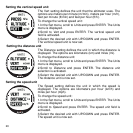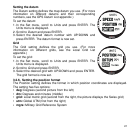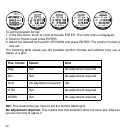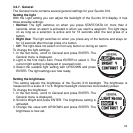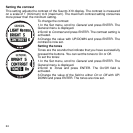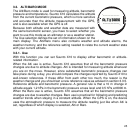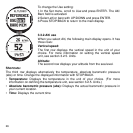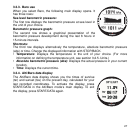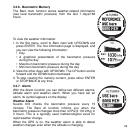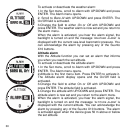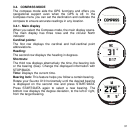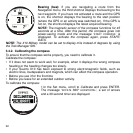
25
3.3. ALTI/BARO MODE
The Alti/Baro mode is used for measuring altitude, barometric
pressure and temperature. Suunto X10 calculates the altitude
from the current barometric pressure, which is more sensitive
and accurate than the altitude measurement with the GPS,
and is also available when the GPS is off.
Because both altitude and weather data are measured with
the same barometric sensor, you have to select whether you
want to use this mode as an altimeter or as a weather station.
The Use selection defines the set of information shown on the
main display. The Alti/Baro menu also contains weather and altitude alarms, the
weather memory, and the reference setting needed to relate the current weather state
with your current altitude.
3.3.1. Use
With this function you can set Suunto X10 to display either barometric or altitude-
related information.
When the Alti use is active, Suunto X10 assumes that all the barometric pressure
changes are due to altitude changes. Alti is intended for measuring altitude whenever
you are on the move. However, since substantial barometric pressure changes can
take place during a day, you should compare the changes reported by Suunto X10 to
well-known references. If these differ from each other too much, the reason is the
weather change and you should set a new reference value as advised in section 3.3.5.
Reference altitude and barometric pressure. A general rule is that a 10 m change in
altitude equals 1,2 hPa in the barometric pressure at sea level and 0,5 hPa at 8000 m.
When the Baro use is active, Suunto X10 assumes that all the barometric pressure
changes are due to weather changes. Baro use is practical for following and predicting
weather trends when staying in a constant altitude. When the GPS is on, the device
uses the atmospheric pressure to measure the altitude reading just like when Alti is
set, regardless of which display is selected, Alti or Baro.



